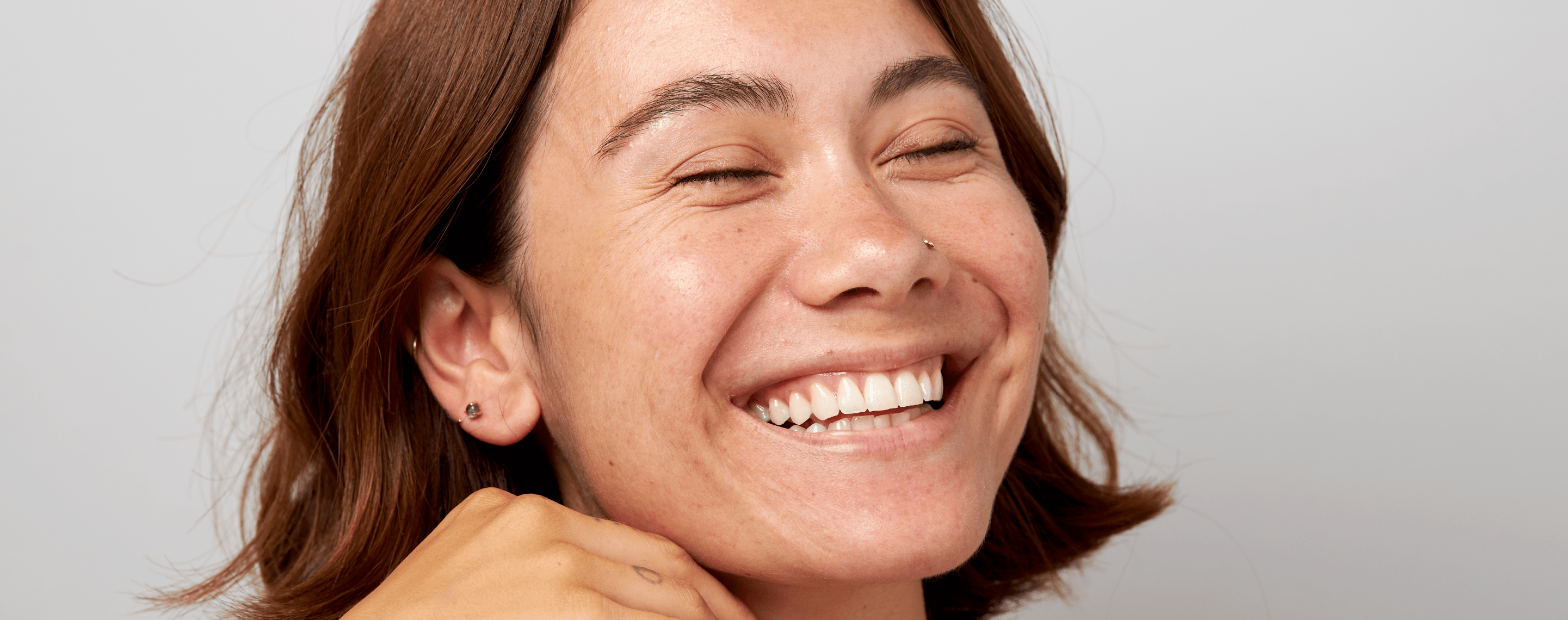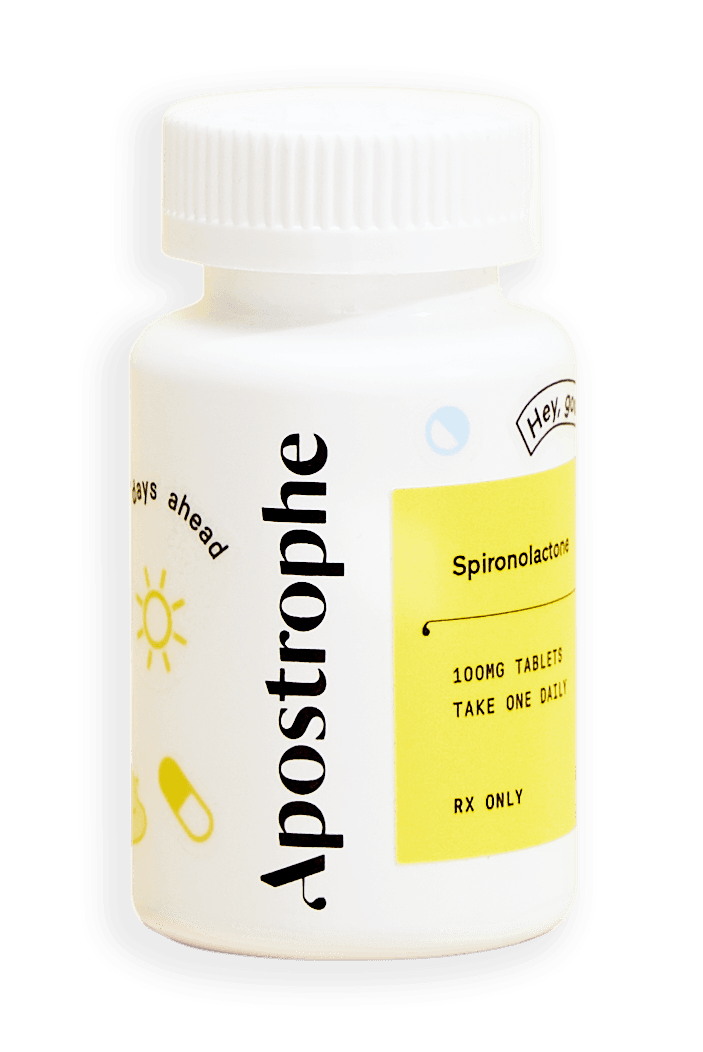Education
Bad acne


SHARE
Education
Bad acne
Medically reviewed by Katelyn Hagerty FNP
Written by Apostrophe Team
Last updated 4/1/2024
Whether acne stole the show in your yearbook photo or is now a persistent presence in adulthood — this skin condition can be a pain to deal with at every age and point in time.
However, while a break out of pimples, whiteheads, and blackheads is reason enough to raid the local cosmetics supply store, more severe forms of acne exist.
Cysts and nodules aren't just an unwelcome addition to the skin, they are also painful forms of acne that can cause scarring. This form of acne requires proper treatment methods to get it under control.
We'll be checking out the ways to manage really bad acne. We'll also be taking a pop at the types and causes of severe acne.
Types of Severe Acne
When acne gets bad, it can get really bad. Severe forms of acne don't just pop up on the face and along the jawline, they can also spread to the neck.
If that isn't bad enough, these breakouts are also known to appear on the chest and back.
Typically, acne is formed when hair follicles under the skin become clogged with bacteria, oil, and dead skin cells. Really bad acne is formed just about the same way.
Cysts
This form of acne is formed when the opening to a sebaceous gland (a gland responsible for producing sebum/oil in the body) becomes clogged. You’ll recognize it as a small lump on the skin surface, although it can get slightly bigger in size.
When the sebaceous gland becomes blocked, oil production continues, but there is no escape to the surface of the skin. This form of acne penetrates deep into the skin.
Nodules
Nodules are lesions that penetrate deep into the skin. Like cysts, they form when the pore fills with enough bacteria, oil, and dead skin cells. This leads to inflammation that bores deep into the skin's surface. However, unlike cysts which are filled with pus and tender to the touch, nodules are pus-free and can feel harder to the touch.
Causes of Acne
Even though nobody wants it around, acne may show up for a number of reasons. Some of the causes of this skin condition include:
Menstrual cycle
Genetics
Medication
Stress
Smoking
Endocrine diseases
How to Treat Really Bad Acne
If you've ever had to deal with severe acne, then you probably know its effects aren't simply skin-deep. Cysts and nodules can also affect your mood, and how well you view yourself. It also doesn't help that bad acne tends to be very stubborn and frustrating.
Notwithstanding, there are proven ways to treat and manage severe forms of acne.
These include:
Antibiotics
This medication may be commonly used for treating UTIs and strep throat, but it is also a useful way to manage bad acne.
Antibiotics primarily reduce bacteria. This means they are able to fight off P. acnes (now called C. acnes), acne-causing bacteria in the body. They also have anti-inflammatory properties and are able to clear off the swelling and redness that comes with acne.
Antibiotics are usually the first recommendation you'll receive to properly manage severe acne.
Isotretinoin
Four things come together to lead to acne: bacteria, clogged pores, excess oil, and inflammation — isotretinoin, a super retinoid, just so happens to be able to attack them all.
This treatment is able to reduce the production of oil and lower the presence of acne-causing bacteria. Isotretinoin is also able to prevent the formation of comedones and has notable anti-inflammatory effects.
If you're really looking to hit acne where it hurts, this retinoid is a good option. However, you'll want to look out for side effects like dermatitis, hair loss, itching, and fragile skin when using this treatment. It has also been linked to birth defects following use during pregnancy, and maybe a cause of mood disorders like depression.
Birth control
A pill a day isn't just good for preventing pregnancy, oral contraceptives are also very handy for helping to manage bad acne.
This is thanks to the actions of estrogen — a hormone you can thank for helping to develop and maintain your reproductive system.
This hormone helps to prevent the formation of androgens like testosterone, a hormone that can encourage acne to appear by promoting the production of oil.
Birth control is effective at treating mild forms of acne like blackheads and whiteheads. This medication is just as tough on more severe forms like cysts and nodules.
So far, the FDA has approved four oral contraceptives for the management of acne. They include Ortho Tri-Cyclen, Estrostep, Yaz and Beyaz.
Spironolactone
This is another form of hormonal therapy noted for its anti-acne properties. Spironolactone is popularly used for managing high blood pressure and for the removal of excess water.
To bring you closer to achieving acne-free skin, this medication has similar anti-androgen effects and is able to manage the production of androgens that can lead to breakouts in the body.
Spironolactone may be used alone, especially in women above the age of 35. However, it is more commonly prescribed with the pill.
If spironolactone is recommended for treating your acne, you should know that it can cause irregular periods, frequent bathroom breaks, dizziness, headaches, nausea, and breast tenderness and enlargement.
Acne removal
In certain cases where acne gets really bad, the best thing to do is to reach out to a dermatologist to help get it out.
To avoid infections, it's recommended that dermatologists physically remove painful cysts and nodules where other acne treatments have fallen short.
This may require injecting the cyst or nodule with a corticosteroid to reduce the pain and size. Likewise, an incision may be made in the cyst and nodule, following which it will be drained to help with managing its effects.
Where one or more of these treatments are effective in managing your acne, your skin will require continued TLC to keep breakouts away.
This may require observing skincare practices like twice-daily washes, using gentle cleansers, ensuring skincare products are non-irritating, rinsing the skin with lukewarm water, as well as steering clear of popping or squeezing breakouts.
One Last Thing
Dealing with really bad acne can be rough. Not only do cysts and nodules are the most severe forms of acne, complete with pain and annoyingly high chances of scarring.
However, despite how serious this condition can get, there are tried and trusted ways to get it under control. However, before deciding on birth control, antibiotics, retinoids, or other treatments, it's always a good idea to first hear what the dermatologist thinks. If you’re looking to get expert treatment from home, get connected with an expert derm team through Apostrophe today.
Shop this post

Oral Spironolactone
Like what you just read? Sign up for our email list to get the scoop on skincare science delivered straight to your inbox.

Education
What is milia?
What is milia? Today, we’re jumping into one type of bump that you may have heard about most commonly in infants — milia.
Read More
Education
Best moisturizer for acne-prone skin
If you have combination acne-prone skin, figuring out which moisturizer is best for your skin might be tough. In this guide, we break down the best moisturizer for combination, acne-prone skin.
Read More
Education
How to build a face care routine
As you get into skincare, it might seem overwhelming, especially trying to figure out the order you're supposed to apply products in. Below, we detail how to build a face care routine for your skin!
Read More
